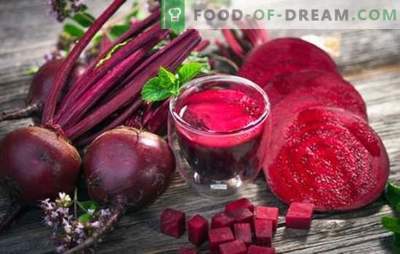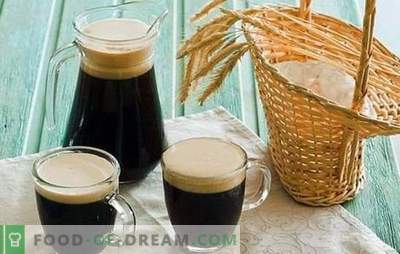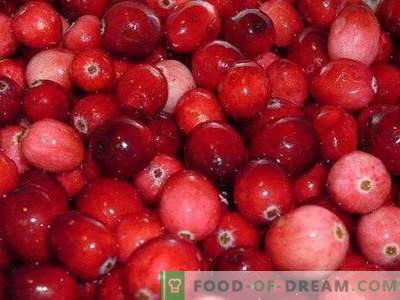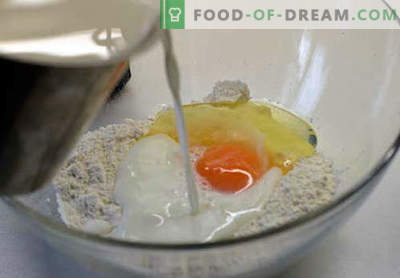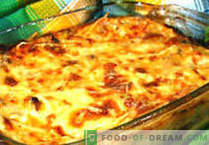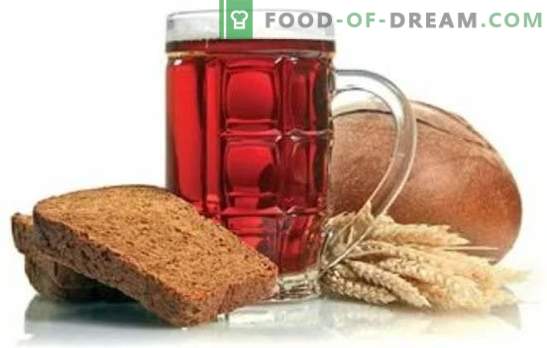
Often in the press there are disputes about the harm caused by yeast to the body. So it is, or not - to judge the professionals, but they also own a statement about the benefits of fermented foods, drinks, like kvass and others, prepared according to the technology of fermentation.
Why are there high minds, many nationalities of our great country cherish for centuries the recipes of amazing drinks and dishes based on them. Including there are many such dishes, prepared without the use of alcoholic yeast. Kvass on a yeast-free basis is the brightest representative of this large family.
Unleavened kvass - general principles of preparation
• Making homemade yeast-free kvass process is long, but not time consuming. The main work is the preparation of raw materials, its mixing with the other components and further fermentation in glass or enameled containers.
• Any berries, vegetables (beets), fruits, wheat or rye bread, as well as grains (oats) can be the raw materials for the production of yeast-free kvass. Often it is prepared on sourdough rye, cooked on its own from rye flour.
• If berry kvass is prepared, then firstly compote is made from the berries, dried rusks are made from the bread, which is then fried. Oats and beets do not require pre-treatment. Oats are simply washed with water, and the peeled beets are crushed.
• Prepared raw materials are combined with sugar or honey, as well as sources of fermentation - malt, raisins, sourdough. After this, the containers are wrapped and sent for a certain time to a warm place or, on the contrary, left on a windowsill. At the end of fermentation, kvass is filtered through a sieve or cheesecloth and, bottled, cooled.
• Home-made kvass, in addition to being an incomparable drink, is used in the traditions of Russian cuisine for filling cold soups, such as okroshka or beetroot soup.
Unleavened kvass on sourdough rye flour
Before you start making kvass, you need to prepare yeast-free yeast for him. It will take more than one day to prepare it, but you can enjoy the kvass cooked on it in a day.
Ingredients
For the leaven:
• 300 gr. rye flour;
• drinking boiled water - 300 ml.
For kvass, for three liters of water:
• 100 gr. rye malt (fermented);
• 100 grams of homemade rye starter;
• 100 gr. sugar sand.
Cooking Method:
1. To make yeast-free yeast, take a clean liter jar. Pour into it two full tablespoons of rye flour, cover with two tablespoons of cooled boiled water and mix thoroughly. Cover the jar tightly and leave it warm for a day. The ideal temperature is from +25 to +40 degrees.
2. The next day, add two more spoons of flour to the jar and pour in the same amount of water. Again, stir everything and leave, wrapped, for another day.
3. Repeat this procedure at least five times. On the seventh day, the rye yeast-free ferment will be ready. This leaven is used not only to make kvass, but you can also bake rye bread on it.
4. Set aside the required amount of starter, and in the remaining add two more tablespoons of flour with water. Stir and clean to the lowest shelf of the refrigerator, tightly closed with a reusable lid.
5. In a clean two-liter, or larger volume, mix fermented malt with granulated sugar. Pour in one liter of boiling water, stir vigorously and leave, wrapped with a towel, for six hours.
6. Pour the malt with sediment into a three-liter bottle. Add two liters of cool boiled water and leave to warm for a day.
7. Then filter the finished rye kvass through layers of gauze and cool well.
Grain unleavened kvass on malt
Ingredients:
• two tables. spoons of rye fermented malt;
• 40 gr. sugar sand;
• 80 gr. dried wheat bread (crackers).
Cooking Method:
1. Put dried bread in a clean three-liter bottle. Add a large spoonful of sugar, all the malt and fill the jar to the neck with filtered drinking water.
2. Bind the neck with clean gauze and place the container in a deep plate so that the “runaway” kvass has a lot to go. Put the bottle in the heat.
3. After 3-4 days, when most of the crackers fall to the bottom, you need to pour two liters of kvass from the jar. This will be convenient if you place double folded gauze on the neck and close the jar with the lid with the holes.
4. Pour the filtered kvass into a bottle with a screw cap. Add a tablespoon of granulated sugar. Close the stopper or lid and shake vigorously so that the sugar is well dissolved. After that, place the container in the refrigerator for an hour to cool the beverage.
5. The sourdough remaining in the can is useful for making a new kvass more than once.
Unleavened kvass on rye breadcrumbs and raisins
Ingredients:
• homemade rye crackers - 100 g;
• full glass of sugar;
• half a cup of light raisins.
Cooking Method:
1. Put the crackers on a baking sheet, and fry them well in a hot oven until dark brown. Do not burn, otherwise the drink will take an unpleasant taste and smell.
2. Fry the crackers in a clean enameled container. Add well-washed raisins, fill all with hot water (3 liters) and clean, loosely wrapped, in heat.
3. When the soaked bread begins to move freely in capacity and most of it rises from the bottom to the top, strain the liquid through gauze and pour into a clean three-liter jar. After that, remove for two days in the heat. The remaining starter is suitable for reuse. 4. Cool kvass cool.
Oat yeastless kvass
Ingredients:
• two full glasses of unpeeled oats;
• five tablespoons of sugar;
• a small handful of dark raisins.
Cooking Method:
1. Soak the oats for two minutes in warm water. Then put it on a sieve and rinse well under cold water.
2. Transfer the oat grain to a clean 3-liter glass bottle. Add all the sugar, washed and slightly crushed raisins and pour boiled water (cold) to the neck. Very important: do not stir sugar in water, it should dissolve itself in the process of fermentation.
3. Bind the neck of the bottle with gauze and place the container on the windowsill for four days.
4. After that, through the gauze that is wrapped around the neck of the jar, strain the kvass and transfer it to a container suitable for storage.
5. In oats again, add five tablespoons of sugar, 2-4 raisins and put back on the windowsill. The new portion is fermented faster, the drink will be ready in a couple of days.
6. Oat ferment can be used not just many times, but even more than one month.
Fast beet yeast-free kvass
Ingredients:
• a small chunk of hard rye bread (preferably a crust);
• granulated sugar - 100 g .;
• one big beetroot.
Cooking Method:
1. Pour sugar into a three-liter glass container. Lower the sliced beetroot into small-sized straws, and stale rye bread.
2. Pour in cold filtered water and, after closing with gauze, clean on a window sill or other warm place for three days.
3. After this kvass strain, and place in the fridge to cool.
Berry unleavened kvass - “Refreshing strawberry”
Ingredients:
• a pound of fresh ripe strawberries;
• two tables. spoons of liquid light honey;
• four spoons of sugar;
• half a teaspoon of dry citric acid. Cooking Method:
1. Sort out strawberries from decayed berries. Remove the remaining sepals and rinse well in a colander under warm water.
2. Pour two liters of water into the pan and boil it over high heat. Dip strawberries in boiling water. After the liquid re-boils, remove it from the heat and let it stand for about forty minutes to the berry broth.
3. Decant the broth, and dissolve in it the sugar, “lemon” and honey. Bottled, not filling up the neck half a centimeter. Put ten raisins in each one and, tightly closed, put in the refrigerator for ten days to ripen.
4. For faster ripening, leave the berry kvass warm for 2 days, then place in the refrigerator for the same period.
Unleavened kvass - cooking tricks and useful tips
• When frying crackers, make sure they are burnt, otherwise kvass will not just taste bitter, it will have an unpleasant smell of a rancid product.
• Do not close the cans with kvass put up for fermentation with tight lids - the product must breathe. If you are afraid that the midges will fly into it and litter will fall, just tie the container neck with clean gauze.
• Often kvass, standing in banks, overflows. Therefore, be sure to put the jars in deep plates, in which it will be collected.


